TO CATCH A THIEF: THE STORY
OF GRACE KELLY
|
If you have ever suffered from Triskedekaphobia
- fear of the Number 13 - then you aren't going to like this
piece of trivia. In 1999, the beautiful and talented
Grace Kelly was voted the 13th most popular movie actress of
all time by the American Film Institute. In terms of
her tragic death, Kelly was definitely unlucky.
Grace Kelly starred with Cary Grant in the Hitchcock film
To Catch a Thief (1955). To this day, To
Catch a Thief remains the most popular movie ever
filmed on the French Riviera. In fact, most people
would be hard-pressed to list another movie filmed on
the Riviera! (Dirty Rotten Scoundrels
(1988), Ronin (1988), That Riviera Touch
(1966), Casino Royale (2006), On
the Riviera (1951) to name a few.)
To Catch a Thief was made
by Alfred Hitchcock at the peak of his career in 1955.
It had two of his favorite stars - Cary Grant and Grace
Kelly - and the movie was filmed in one of his favorite places:
the French Riviera. To say the three of them had a good time
filming this picture would be an understatement.
Hitchcock was known for dark psychological thrillers like
Psycho, Vertigo, The Birds,
and Marnie. However, this movie was so
much different from all his other movies. Not only was
this movie far more 'romantic' than it was 'thrilling', I
would add that the script was downright funny much of the
time. Although this
polished caper film contains a typical amount of mystery and
suspense, its lighthearted,
relaxed plot definitely lacked
the profound psychological depth and complexity of his other
works. And you know what? No
one minded a bit. This movie was very entertaining.
The title was based on an old French proverb - "To
catch a thief, use a thief". Cary Grant played
John Robie, a man who thieved for the French Resistance
during the war. Now a recent spate of burglaries has cast
suspicion on him, so Grant is forced to set out to catch the
real cat burglar in an effort to clear his name. That is
when he crosses the path of Francie Stevens (Grace Kelly),
the daughter of an American heiress. At this point, Francie
falls for Robie and decides to set a few traps of her own to
catch her man.
The plot was clever and kept us guessing right up to the
very end who the real thief was. However, although
there was plenty of suspense in To Catch a Thief,
the incredible chemistry between Grace Kelly and Cary Grant
stole the show. Thanks in large part to their constant
clever and witty banter, you simply could not take your eyes
off the romantic interplay between Kelly and Grant.
They sizzled on-screen together (it didn't hurt at all that
they both really liked each other in real life. For
that matter, Hitchcock adored both actors).
Meanwhile, the search for the real crook had to settle for
playing itself out in the background. To this day, I
can barely remember how they caught the crook, but I will
never forget the fireworks scene at the end of the movie.
Hitchcock's masterful use of symbolism was quite effective
at getting his point across.
The movie was filmed primarily in
Monaco, the small but incredibly wealthy
mountainside kingdom whose fame is synonymous with the
French Riviera. By an amazing coincidence, just one
year after the release of the movie (1955), Grace Kelly
would become Princess Grace of Monaco when she married
Prince Rainier (1956). No movie script could top her
real life story. Indeed, their fairy-tale romance
captivated the world -
an American movie queen, a European prince,
and their enchanted life in a hilltop palace overlooking the
Mediterranean. The connection
between To Catch a Thief and Kelly's wedding
would be forever linked.
There is one more connection between
the movie, Kelly, and Monaco
that bothers everybody - the car chase scene. It was
more of a "psychological" car chase really, but
who can forget Grace Kelly zooming
along the cliffs of the French Riviera in her little
roadster? The immediate plans were
to invite Grant along for a picnic and a countryside drive
in her open sports car. This allowed us wonderful
glimpses of Monaco's mountainside beauty. Then came the
suspense. In one of the best scenes in the movie,
Grace Kelly drove much too fast across precarious Riviera
mountain roads to help Cary Grant elude pursuing police.
As their drive continued, it became a high-speed chase along
treacherous mountain roads to elude the police following
them. Kelly/Francie calmly held onto the wheel with
her dainty white gloves as she screeched her motor car
around cliff-edged curves. In contrast, Grant was worried -
clenching tense fists with his sweaty palms resting and
rising on both of his thighs. Kelly barely missed running
down an elderly woman carrying laundry across a village
street. Then she barely missed hitting a chicken in the
middle of the road. The pursuing detectives
had to swerve to avoid the same bird and crashed into a
stone wall.
Screeching tires, tumultuous precipices,
a good looking
girl, and all seen through the lens of the Master, Alfred Hitchcock!
However, today, the scene plays much differently. How
eerie is it to see Grace Kelly driving so
fast on those French Riviera cliffside roads, in light of what
happened to her later?
As they say about the roads, driving a car on the Riviera is only for the
brave. The passing of Grace was
attended by paradox and premonition. On her first visit to
Monaco, Grace took one look at the
twisting, winding roads of
Monaca and remarked,
"Who would ever dare
to drive these roads?" In
1982, Grace Kelly, 52, tragically died in a car accident
when she drove off a mountainside road in Monaco. Her
car plunged down a 45-foot embankment.
Although there were countless rumors as to what 'really
happened', the consensus today is
that Grace Kelly suffered a stroke and lost
consciousness. What unsettles us all is that she died
while driving the same roads she had the movie. Now
that is too weird.
|
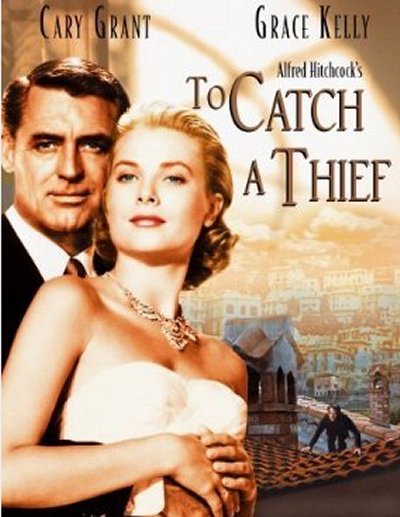
Cary Grant
had another famous movie with a French Riviera scene. Can
you name it? Answer at bottom
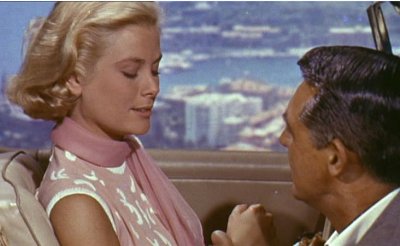
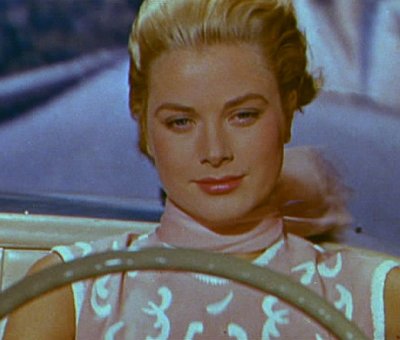 |
 |
ROYAL WEDDING: PRINCE RAINIER
AND PRINCESS GRACE
|
RICK ARCHER'S NOTE:
The following article is a synthesis between two excellent
stories I found on the Internet. One story was a comprehensive
1996 piece about Grace Kelly I found in the
People Magazine archives. In addition, I found a terrific article on the
Pop Culture Institute
website that concentrated more on the actual wedding itself.
Both articles came at the story from different angles, but I soon
realized they fit together like a glove.
|
This
Article came from the People Magazine Archives
February 12, 1996
Vol. 45 No. 6
When Hollywood's Princess
Met the Prince of Monaco, She Traded Her Realm for His. The Result
Wasn't Always a Perfect Marriage, but It Lasted Till Death Did Them
Part
In the spring of 1955, Grace Kelly was in the South of France
attending the Cannes Film Festival.
Grace was persuaded
to visit Monaco by Olivia de Haviland’s husband Pierre Galante. An
audience was arranged with Prince Rainier to be photographed by
Paris Match.
One reason for her visit to Cannes was to
renew an old affair with the actor Jean-Pierre
Aumont. At lunch with him one afternoon,
she mentioned her plan to skip the photo
shoot the next day with the Prince of Monaco. It conflicted with her
appointment to have her hair done. Aumont was aghast. "Grace," he
insisted, "you can't possibly do that! He's a reigning prince."
Kelly decided to keep the appointment.
At the palace, Kelly's group was kept waiting by the Prince who was
running late. After more than an hour, the Prince appeared just as
Grace was about to give up and leave.
After the shoot, the Prince escorted Grace through the formal
gardens and showed off his personal zoo, impressing her by petting a
baby tiger. He expressed his intentions to visit the US in the
future. Reluctantly she took her leave to return to Cannes were she
was scheduled to host a reception. It was clear that she was
intrigued by the Prince who she found utterly charming. The prince
was also intrigued by Grace, who he found beautiful and poised, unlike
the characters such as the dowdy Georgie Elgin in The Country
Girl. It appeared that the Prince had found his potential
Princess.
There wasn't much Grace
Kelly couldn't do that year. She was 25, an Oscar-winning
actress and a world-renowned beauty. In a short time she had gone
from being a Philadelphia debutante to a film star. Alfred Hitchcock
had saluted her enchantments that year in To Catch a Thief, and
during her long onscreen kiss with Cary Grant, fireworks broke out
behind them. Very fitting. To sum up the world's opinion of Grace Kelly, nothing
short of fireworks would do.
Prince Rainier of Monaco headed the House of Grimaldi, Europe's
longest-ruling princely family (established 1297). Though his domain
was just 370 acres—smaller than the back lot at Kelly's studio,
MGM—it had space enough for his 200-room pink palace and his private
zoo. And room as well for the lightly faded Monte-Carlo Casino,
which still pumped out sufficient revenue so that none of his 20,000
subjects paid any personal income tax. Monaco was
popular mostly as a tax haven for assorted ex-patriots who made too
much money to live in their own country. But under the terms of an old
treaty, if Rainier died without an heir, they would all become
citizens and taxpayers of France.
Known
as the wealthiest bachelor in the world, Prince Rainier
had broken off
plans to marry a girlfriend,
French actress Giséle Pascal,
because she was infertile
(a curious conclusion since she later had children).
Now it was time for Plan B.
Rainier, 31,
had decided to begin searching for a
suitable bride. From Rainier's point
of view, clearly, looks were a
priority. En route once to the U.S., he described to reporters his
ideal woman: "I see her with long hair floating in the wind, the
color of autumn leaves. Her eyes are blue or violet, with flecks of
gold." From his side of the
Atlantic, Rainier saw in Kelly a woman who might bring not only
heirs, but a touch of glamour to revive his entire domain.
Despite her initial indifference
during the Paris Match photo shoot, the
golden-haired, blue-eyed
Kelly's first meeting with Rainier went well. "I think he's very
charming," she told Aumont. After returning to the States, she and
the Prince began a correspondence that was avidly pushed along by
Father Francis Tucker, the American priest who was Rainier's closest
aide and chief talent scout for eligible Catholic girls.
From Kelly's point of view,
aside from his title and a degree
of swarthy good looks, Rainier III also had a certain Gallic charm,
not to mention the sort of confidence that came from being raised in
an atmosphere of total deference. Whatever it was, it worked on
Kelly. For a woman whose well-guarded love life had been endlessly
complicated by the insecurity of actors, and one whose future career
depended on her developing the same insecurities - frowning into
mirrors to count each new line appearing in her face - she left
Monaco on the fateful day they met with a possible escape
route already forming
in her mind.
Kelly had already been through Clark
Gable, Gary Cooper, Ray Milland and William Holden, as well as the Shah of Iran
and the fashion designer Oleg Cassini, whom she had come close to
marrying. Her taste in men horrified her father, Jack
Kelly, an Irish-American bricklayer turned millionaire
builder. Her younger brother once complained, "I don't generally
approve of these oddballs. I wish she would go out with the more
athletic type."
But by the time she and Rainier met, it
may have required nothing less than a prince to equal Kelly's
celebrity. "I don't want to be married to someone who feels
belittled by my success," she once said. "I couldn't bear walking
into a restaurant and hearing the maitre d' refer to my husband as
Mr. Kelly."
After she returned to Hollywood to film The Swan
(in which she would play a
young woman
betrothed to a prince!),
Kelly initiated a correspondence with her new royal admirer
that paved the way. Their second meeting was a dinner date and a
meeting with Grace's family seven months later.
When Rainier visited the US that December
1955 - ostensibly on a State Visit -
rumors were already afloat that he was shopping for a wife.
The common knowledge of his need to produce an heir made it obvious
that Rainier was under pressure to something about it.
Consequently Rainier's every move was subjected to intense scrutiny. The
32-year-old Prince was coy whenever asked about his matrimonial
aspirations, despite the fact that the gossip columns were fairly
oozing with innuendo that his real purpose for the visit was
dynastic rather than diplomatic. Under the terms of a treaty signed
by both France and Monaco in 1918, were he to die without an heir,
then his country (along with its tax-free status) would
revert to French control! Seeing as
the Grimaldis had been squatting on that rocky hillside since 1297,
Rainier had no intention of being remembered by history as the one
who had relinquished it.
It was during the December state visit
that Rainier met his future in-laws. He
proposed during this visit. Rainier's proposal struck Kelly as
more a business deal than anything else. However, it was a
role she wanted to play, so she accepted.
Shortly after
that their formal engagement was announced.
On April 4th, 1956, Grace Kelly sailed from New York City's
Pier 84 on board the SS Constitution with 70 members
of her family and friends - all paid for by Grace's father Jack
Kelly who, thanks to Monaco and MGM, was relieved of his fatherly
obligation to pay for the wedding. The ship arrived eight days
later, where it was greeted by most of Monaco's 23,000 inhabitants,
not to mention a sizable flotilla of pleasure craft, most of them
bearing members of the European media. Since the Constitution
was too large to dock there, it was greeted at the mouth of the
harbour by the Princes' yacht Deo Juvante II,
a wedding present bestowed on him by the erstwhile Aristotle
Onassis.
"Their relationship was both rational and
passionate," says Rita Gam, a Kelly bridesmaid who remained one of
her closest friends. "I love his eyes," Kelly gushed. "I could look
into them for hours." When Rainier gave her an immense diamond
engagement ring, she flaunted it on camera in her last Hollywood
film, High Society. Their wedding week in April 1956 brought them
even closer. In the words of one of her biographers, Robert Lacey,
it became "the first modern event to generate media overkill."
Monaco swarmed with reporters who would have been even more excited
if they had known how worried Kelly was about the medical
examination demanded by the Grimaldis to determine whether she could
bear children—because it would also show that she was not a virgin.
(As it turned out, the matter was discreetly passed over.)
Having already been dubbed The Wedding
of the Century, this was a title
it would hold securely until a rival in July 1981
would surpass it.
The wedding of Rainier and Grace was
actually two weddings; the first, held the day before the big
event, was a civil ceremony attended by eighty guests in the throne
room of the palace, at which Grace wore a dress of rose pink taffeta
and Alençon lace, designed by the head of MGM's costume department
Helen Rose. Following the somber affair a
luncheon was held at the royal palace. After
that there was a garden party on the palace grounds for 3,000
guests.
The next day Saint Nicholas Cathedral was the
scene of one of the most opulent - yet elegant - weddings of all
time. The wedding dress, also designed by Helen Rose, was the
crowning achievement of her career. Three dozen seamstresses worked
in top secret for six weeks creating a demure fantasy of
125-year-old rose-point lace, silk taffeta, peau de soie, and tulle
at a cost of more than $7,200. Following the wedding, Princess Grace
donated the dress to the Philadelphia Museum of Art in her hometown;
it wasn't seen in Monaco again until the summer of 2007, when it was
loaned to the Grimaldi Forum for an exhibition timed to coincide
with the 25th anniversary of Princess Grace's
death on September 1982.
The wedding was performed by Monsignor Gilles Barthe, Bishop of
Monaco, in the presence of 600 guests, and watched on television by
30 million more. The
guests did not include a single representative from any of the royal
houses of Europe, which were inclined to see the Grimaldis as
quarrelsome minor aristocracy.
For example,
Queen Elizabeth II is said to have turned
down an invitation because there'd be "too many movie stars" there -
and were there ever! Cary Grant, Ava Gardner, David Niven, and
Gloria Swanson to name just a few, in addition to the Aga Khan, King
Farouk, Aristotle Onassis, Conrad Hilton, and W. Somerset Maugham.
Rainier's mother came in the
company of a former jewel thief, which caused some suspicion among
the several guests whose jewels were stolen throughout the week.
That evening the newlywed couple hosted a
wedding gala at the Opera House.
Following the whirlwind of events, the royal couple took a week-long
honeymoon aboard the Deo Juvante II.
Nine months and five
days later, Princess Caroline was born.
However, it was not until March 1958 with the birth of the
future Albert II that the House of Grimaldi was safe
for another generation.
Grace brought an unaccustomed American
informality to the royal family. "The nursery doors were open, and
the children were very much a part of the fabric of the day," says
Rita Gam. But the constraints of palace life were not always easy
for Grace. In 1962 photographer Eve Arnold came to Monaco to work on
a CBS documentary. "I got the distinct feeling that Grace Kelly felt
trapped," she says. "It wasn't the fairy tale one had expected."
To fill her time, Grace devoted herself to charities and cultural
affairs, the allowable occupations of crowned heads. But her husband
was against her growing wish to resume acting. "They were living in
a gilded cage," says her onetime fiancé Cassini. "She wanted to be
respected as an actress." When Hitchcock offered
Kelly the lead in his 1964 film Marnie,
Kelly leaped at the chance. Rainier had
given her his lukewarm approval in the beginning. However
the public furor in Monaco was so negative
against making the movie that Rainier put his foot down. The
part went to Tippi Hedren instead, a near-clone
of Kelly in looks.
By the late 1970s, Grace was spending part of each year on her own
in Paris. She began to enjoy the company of younger men like Robert
Dornhelm, an Austrian film director. Even as her hell-raising
daughters consumed more of her time, her marriage occupied less of
it.
Then came the brutal end. Kelly once told the gossip columnist Hedda
Hopper, "I hate to drive a car...I am not a good driver." On Sept.
13, 1982, she and Stephanie, then 17, were returning from France
along the mountain roads approaching Monaco. On a hairpin curve the
Princess lost control of the car (doctors would later suspect a mild
stroke at the wheel). Her Rover plunged down a 45-foot embankment,
landing on its roof. She died the next day without ever regaining
consciousness.
The media that had descended upon Monaco for the wedding returned
for the funeral. And the royalty that had snubbed the happier
occasion came this time, a recognition of the dignity that Kelly had
given her role.
His wife's sudden death also brought home to Rainier what he had
lost. Growing old in a principality where her picture is still to be
seen everywhere, the Prince, by most accounts,
was sincere in his grief. Outliving
Grace by 23 years, he never remarried. One of Kelly's
favorite quotations was from the poet Kahlil Gibran: "When love
beckons to you, follow him, though his voice may shatter your
dreams...." In their different ways, it was a line that Grace and
Rainier would come equally to understand.
|
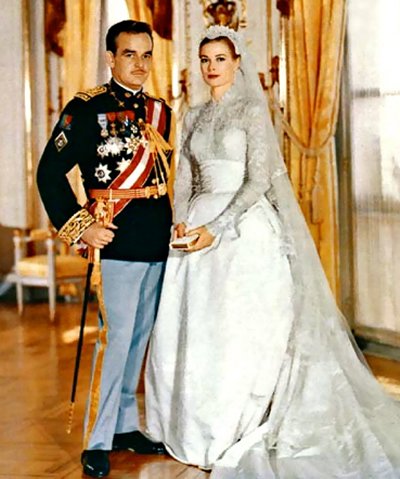
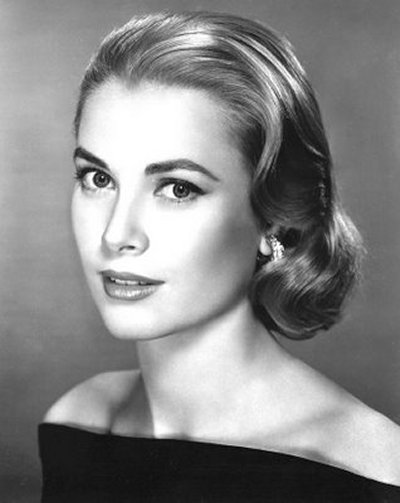
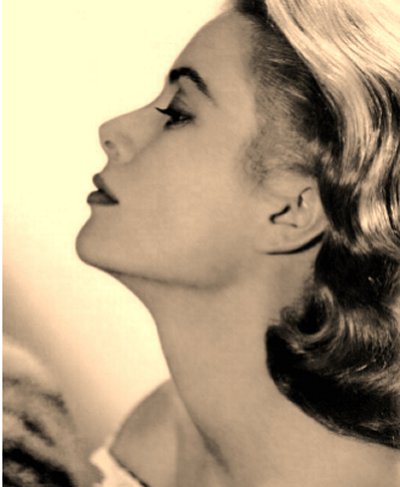
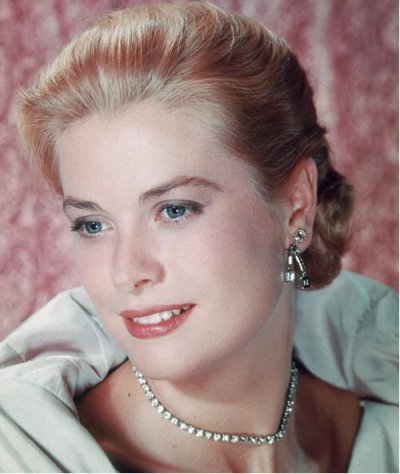
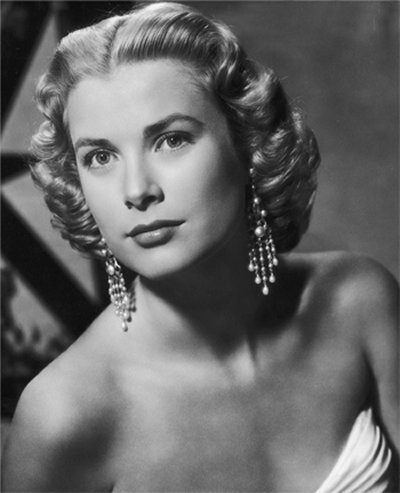
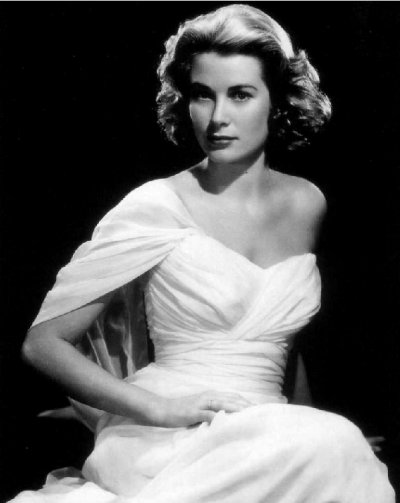
|
|
PRINCESS GRACE AND
PRINCESS DI - THE STORY BEHIND THE FAIRY TALE
|
RICK ARCHER'S NOTE: Before Diana,
there was Grace - just as beautiful, just as fabled a wedding, just
as fashionable, just as much a royal philanthropist, just as tragic
a death.
Except Grace had the added cachet of Hollywood glamour —she had an
Oscar. And she was well-mannered in an era in which stars never
appeared in public without underwear and princesses never blabbed to
the media. Princess Grace was an elegant woman who carried
herself with extreme dignity. Grace was invaluable to her
husband; she did much to help shift the international perception of
Monaco as a "sunny place for shady people" to the
financially successful tourist mecca it is today. The success
and respectability of modern Monaco owes much to the auspices of
Princess Grace.
Apparently the lives of these two famous women crossed two times in
the space of a year. In March 1981, Grace was in London for a
poetry reading party to which Prince Charles had been invited.
Recently his engagement to Diana had just been announced; this would
be Lady Di's first public appearance since the announcement. .
Diana showed up in a low-cut dress two sizes two small. Her
breasts were barely contained. The sight of her struggling to
get out of the car in that dress had driven the media into a frenzy.
This was Diana's first real taste of what it was going to be like.
She was a nervous wreck.
Diana's
panic was still evident at a reception after the
reading at Buckingham Palace. It was then that Grace asked
the young Diana if she would accompany her and
her aide Gwen Robyns to the ladies room for a chat.
Gwen Robyns later reported that while Diana was touching up her
make-up standing in front of the mirror, she burst into tears.
“The dress Diana was wearing was so
revealing, she explained, because it was two sizes too small;
the intended outfit had not arrived in time – an unnerving
situation to occur for her first formal appearance. Diana also
said she now realized more than ever how unbearable it would be
to have so many people jostling for her attention, asking
questions, not only of her but of anyone who knew her. She saw a
life totally devoid of privacy. She was frightened. She asked
Princess Grace, "What can I do?"
Diana was certainly asking the right woman for advice. At this
point Diana seemed to shrivel under the spotlight’s glare. Not
Grace. Grace had always known how to use her celebrity to
her advantage. No matter how troubled her private life,
once the spotlight shone upon her, the former Grace Patricia
Kelly transformed into Her Serene Highness – the
greatest role of her life.”
Grace put her arms around the distraught Diana and patted her on
the shoulder. She then cupped Diana’s face in her hands. “Don’t
worry, dear, ” she said with a gentle smile. “You see, it‘ll
only get worse.”
Not the most tender of words, but quite
prophetic. Here was a breath of honesty rare in Diana's
world; words that could only echo
back as the sad years passed.
The second meeting was a brief encounter at Diana's Royal Wedding in
July 1982. Little did anyone suspect what was in store for
either women - a tragic death for Grace five short months later in
December 1982 and a terrible broken marriage for Diana.
Unfortunately, like Princess Di, I think Grace had a marriage that left
something to be desired. As I read between the lines of all the
Grace stories, her fairy tale marriage definitely had its ups and
downs. Although the magazines of the day were thrilled at the
story lines, there were details that raised my eyebrows.
For one thing, the courtship was ridiculously short. I studied
stories about Rainier and Kelly for two entire days. Unless I wasn't
reading things right, it looked to me like the man proposed to her
the second time they met! Yes, there had been correspondence
across the seas, but typically a decision to marry requires some
getting-to-know-you time. To me, the Wedding of the Century
was in reality Rainier and his mail-order bride! Here is one
chilling anecdote I ran across.
"After accepting
Rainier's proposal, Grace called her friends to tell them she
was engaged to be married but hung up before telling them who
the man was. Confusion reigned. The consensus was Oleg Cassini,
her off and on boyfriend. At the time no one suspected
Prince Rainier. She had never said a word about him. Where
did he come from?
Legend
has it that Marilyn Monroe's engagement congratulations to Grace
ran, "So glad you've found a way out of the
business." '
It is impossible not to draw comparisons
between the Princess Di and Princess Grace. Both women were
known for their beauty. Both women were known for their sense
of style. Both women were known for their philanthropy.
Both women were known for their philandering.
Both woman had Royal Weddings of the century. Both women died
of tragic car accidents. Both women lived out their lives
before constant media scrutiny. Despite their wide public
popularity, both women appeared to have troubled personal lives.
Both women died the victim of Cinderella marriages that ended with
shattered glass slippers.
As I continued to poke around the Internet, I
found these comments in a
2007 blog by
Robert Stein that seemed to support my suspicions.
Born Grace Kelly of Philadelphia, she was
glowingly beautiful, as movies on TCM still show, and talented
enough to win an Academy Award at the age of 25. Yet she gave it
all up to marry a man she hardly knew and become the Princess of
a financially distressed country smaller than the size of
Central Park.
As a magazine editor then, amid all the hoopla of the fairy-tale
wedding, I wanted to know why. So I sent a reporter to
interview her mother and three sisters, who pictured her as a
quiet middle child who failed to fit into an extroverted,
hyperactive rich family like the Kennedys and withdrew into her
own fantasy world.
They persuaded Grace to talk about it. “You get beyond the point
of anger," she said. “If you try to fight back, it takes too
much out of you. I can be stubborn, but I can’t quarrel. I’d
rather give up. I don’t like fighting, all the loud voices and
the angry words. When it’s finished, I feel as though a
steamroller had gone over me.”
She escaped all that by marrying a Prince with whom she had only
spent a few hours, in a virtual arranged marriage that would
bring new life to the main industry of his domain, the casinos
of Monte Carlo.
On their twentieth wedding anniversary, Grace and Prince Rainier
did another interview for me. Looking back, he admitted, “It was
not love at first sight … We were both ready for marriage.”
On their first weekend, Rainier was impressed by the Kelly
family “with the father absolutely the boss. I liked that. It’s
the way I wanted my marriage to be.” He went on
enthusiastically endorsing male dominance as “natural and right
based on his experience training wild animals."
Grace tactfully agreed. “I was a star, but I wasn’t happy. I
wanted to marry, but it had to be someone who wouldn’t become
Mr. Grace Kelly. It was important that he be a man and remain
one.”
When Rainier was out of the room, she added, "As a Gemini, two
people in one. Light and darkness. When it’s dark, I avoid it or
make light of it. You know, turn a quarrel into a laugh."
In the following years, throughout her older daughter’s
disastrous marriage and divorce, Princess Grace kept her
silence, but friends were troubled to see her drinking heavily
and gaining weight.
Then, on a morning in September, 1982, driving back from a
shopping trip to Nice, with Stephanie, her younger daughter, sitting beside her,
53-year-old Princess Grace of Monaco approached a hairpin curve at high speed and went
off the road without, as a driver behind her testified, even touching
her brakes.
The official explanation for the accident was that she may have
suffered a stroke, but those who knew Grace Kelly believed
otherwise; perhaps
the repressed anger of a lifetime had finally exploded during a
quarrel with her daughter.
So ended the fairy tale.
|
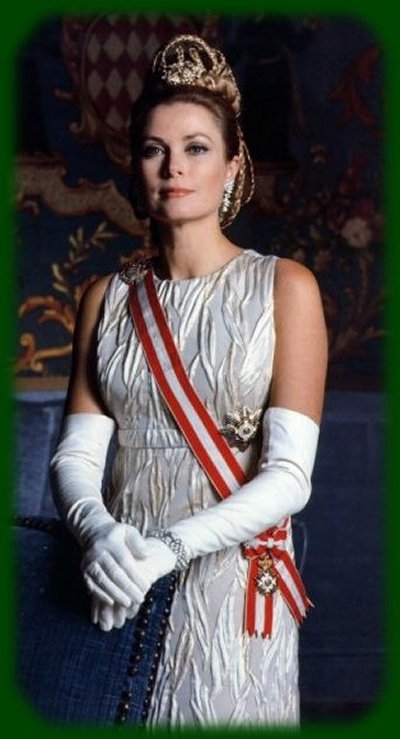
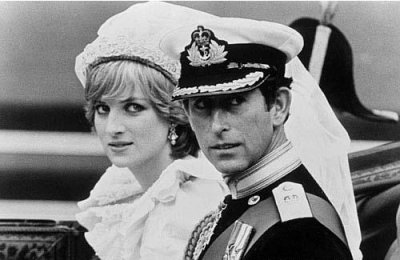
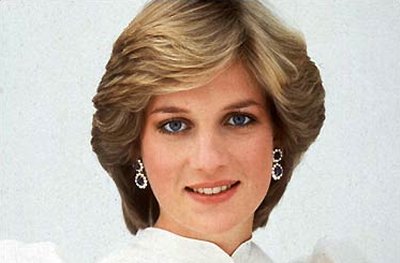
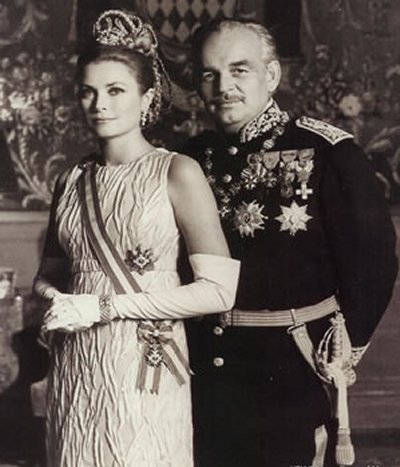
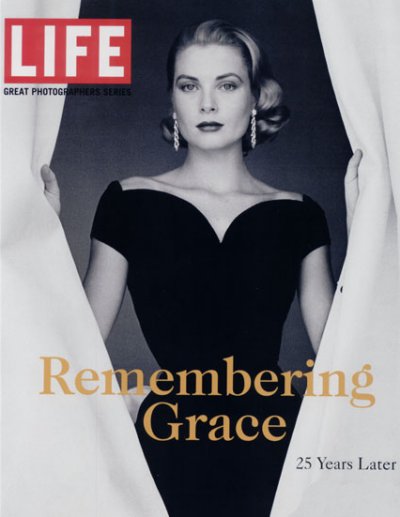
|
|